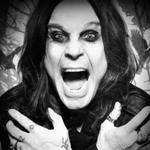 bredulino schrieb:"… the Secret Service had one of the bullets that struck Mr Kennedy AND THE OTHER is lodged behind is [sic] ear.... "
bredulino schrieb:"… the Secret Service had one of the bullets that struck Mr Kennedy AND THE OTHER is lodged behind is [sic] ear.... "
Damit passen dann 3 Schüsse nicht mehr.
Ergo: Zweiter Schütze !
the testimony of the HSCA firearms expert Vincent P. Guinn that at least four other types of ammunition shared the same composition of trace elements as the 6.5 Mannlicher-Carcano ammunition, the neutron activation analysis leaves the door open to other realistic possibilities.
Das kommt noch dazu.
for instance, the report from a top FBI administrator, Alan Belmont, to Clyde Tolson, Hoover's second in command, in which Belmont on the night of November 22nd advises that a bullet has been found lodged behind the President's ear.
Hier nochmal
@bredulino bestätigt
Und zuletzt gab es dann noch:
The Haythorne Specimen: The second piece of evidence was a bullet found in 1967 on top of the Massey building by Rich Haythorne, a roofer doing work on the building. The Massey Building was located about 8 blocks away from the TSBD in the 1200 block of Elm Street. It has since been torn down. The bullet remained in the possession of Haythorne's attorney, until it was delivered to the HSCA for examination. The HSCA utilized the services of the Washington, D.C. police department, where it was determined that the bullet was a jacketed, soft-point .30 caliber bullet, weighing 149 grains which was consistent with the .30 caliber ammunition produced by Remington-Peters. Such ammunition was a popular hunting load and many gun manufacturers chambered their rifles to accommodate this ammunition. The 6 groove, right hand twist rifling marks on the bullet indicated that the bullet was not shot from Oswald's Mannlicher-Cacano.
The Lester Specimen: The third specimen was a bullet fragment found in Dealey Plaza by Richard Lester in 1974. Its precise location was reported to be 500 yards from the TSBD and 61 paces east of the triple overpass abutment. Mr. Lester turned the fragment over to the FBI for analysis in December, 1976. The FBI reported its findings in July, 1977, and concluded that the fragment, which consisted of the base portion of a bullet and weighed 52.7 grains, was consistent with the diameter of a 6.5 mm bullet. It was also determined that the fragment came from a metal jacketed soft point or hollow point sporting bullet. The rifling characteristics did not match those of a Mannlicher-Carcano. Even though the bullet exhibited the same 4 grooves, right hand twist pattern as Oswald's Mannlicher-Cacano, the lands between the grooves were spaced further apart than his Carcano. Once again, no one ventured to suggest that the fragment might represent the work of a second gunman.
The Dal-Tex Specimen:
The fourth piece of firearm evidence consists of a rusted shell casing found on the rooftop of the Dal-Tex Building in 1977 by an air-conditioning repair man. The Dal-Tex Building is just east of the TSBD, across Houston Street. Assassination researchers have long speculated that a second gunman was positioned at that building. Judging by the rusted condition of the shell case, it had been there for quite some time. What was unique about this case was the crimped edges along the neck suggesting that either the shell had been handloaded or had been used in conjunction with a sabot. Specimens 1), 2) and 3) could conceivably have been shot from locations other than Dealey Plaza by some careless hunter. However, this shell casing meant that the rifle was shot where the shell was expended and it is unlikely that deer hunters ever had occasion to position themselves on a rooftop in downtown Dallas.
In Amerika scheint es eine Freuzeitbeschäftigung zu sein von Dächern zu ballern oder wie kommen all diese Fragmente dorthin?
McMurdo schrieb:kommt drauf an wen man fragt, manche wollen ja sogar 4 gehört haben.













